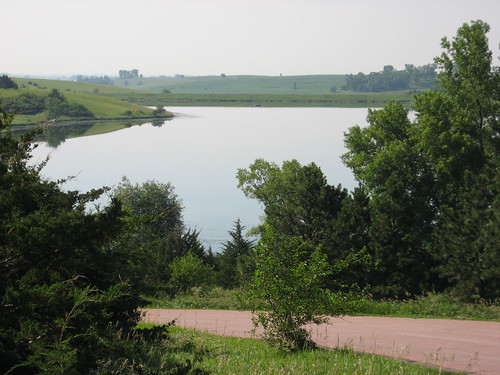
After sitting in the backyard storage shed for the past two years, I decided to load up my Aleut Folbot and see if it still floated; I wondered if perhaps the mice had gotten to it over the past two winters. Lake Lakota, in Newton Hills State Park, seemed like a good spot to assemble the boat and take a morning cruise, so I headed there about 9:00 a.m. today, a sunny day with no hint of rain. We have had day after day here in the Sioux Falls area of rain over the past couple of weeks, so I felt a pressing need to take advantage of a clear, sunny day with only a mild wind. Currently, the rivers and creeks are swollen with rain and running deep and fast in this area, and there are cautions issued by safety authorities about canoeing/kayaking on the Big Sioux River and Skunk Creek. Lakes are a better bet in these conditions.
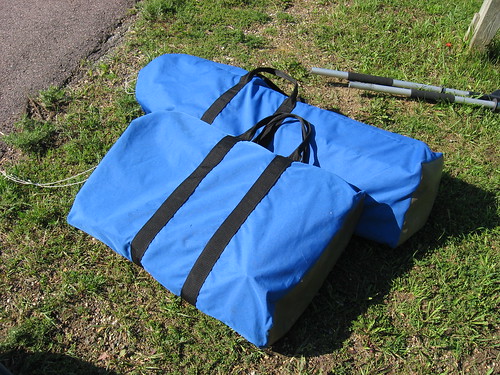
The Folbot is stored in two bags, one for the framework and the other for the hull. I put one of the bags into the trunk and the other in the back seat. The trunk of my Honda Civic hybrid is smaller than most cars due to the placement of the large battery used for the engine assist function. Because of the two-year gap in my use of the craft, assembling it took a little longer – maybe 20 minutes. The parts seemed to fit together okay, and soon I was ready to head out into the lake.
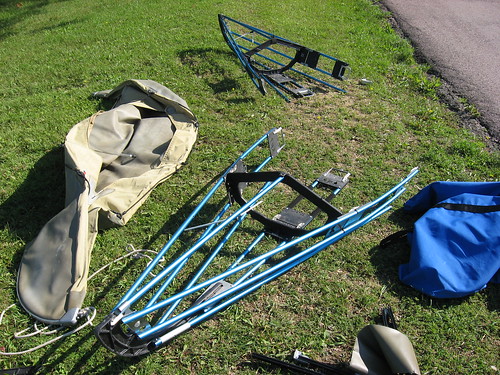
I have a rudder for the Aleut, but attaching it seems to take as much time as assembling the boat, so I have stopped using it. Whenever using a kayak without a rudder, I am reminded of the extra control and ease of directional paddling offered by a rudder-controlled boat.
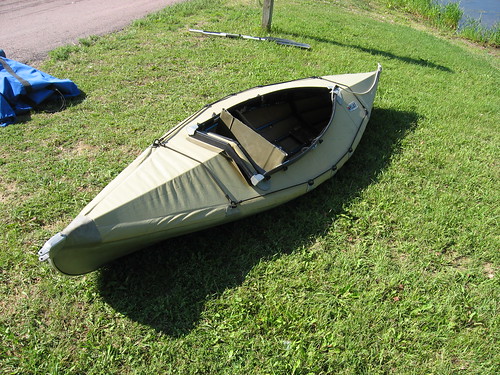
Lake Lakota has undergone quite a change since I last visited in March. The area is covered in green vegetation, but then so is much of the surface area of the lake. The lake is in two parts, much like the letter “L.” The major section is oriented north and south, and an arm extends off to the west. Water in the center portion of the lake is generally clear of aquatic vegetation, but there is extensive algae growth and heavy growth of aquatic plant life along the shores, out perhaps 10 to 15 feet on either side of both portions of the lake.

Cruising up into the little bays along the shoreline means coasting over heavy plant life extending from the bottom to just below the surface, often plants that exceed five or six feet in length. Navigating through this growth reminded me of ships following leads in ice-covered waters in the polar regions of the world. There are leads that allow a kayak to get in close to the shore through narrow passageways.
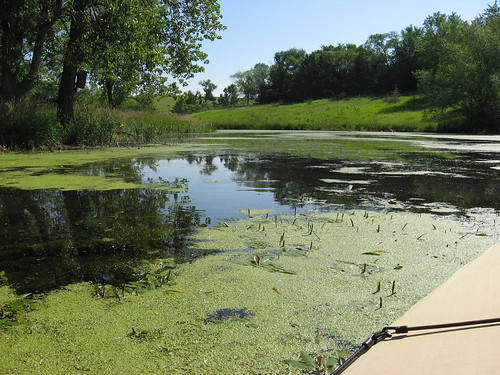
A kayak can also coast over the plant life as long as the paddler uses short and shallow dips of the paddle. Such passage seems more akin to poling than paddling. But, this sort of travel also takes a paddler to areas where others cannot easily visit. Motorboats would just not be able to negotiate such a passage through the surface plant growth. I like to spend a few moments in such nearly inaccessible places observing the landscape and looking for animal life.

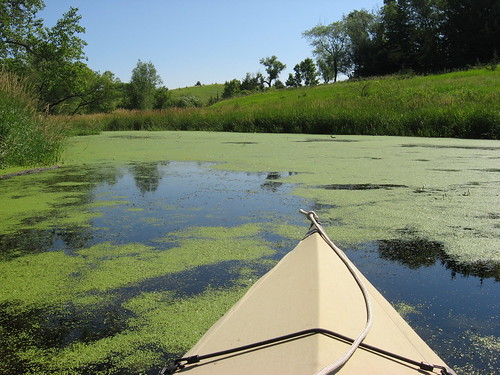
On past visits to Lake Lakota, I have found many turtles sunning themselves on logs. Sometimes I have found frogs sitting on pads, especially within the western arm of the lake. In the early spring, there have usually been large numbers of nesting waterfowl on the lake, particularly in the bays and into the western arm. Today, I saw almost no wild life. There were no turtles or frogs visible, and no waterfowl either. The only wildlife I saw were shore birds and some fish. While the water plant life is extensive, the water is also deep. In the “holes” and “valleys” of the underwater plant jungle, I could clearly see many fish, both large fish and minnow types. The water along the shoreline and in the western arm was usually four to seven feet deep, measured by plunging my paddle into the lake. Still, the water was clear enough to see these fish at a couple of feet below the surface.
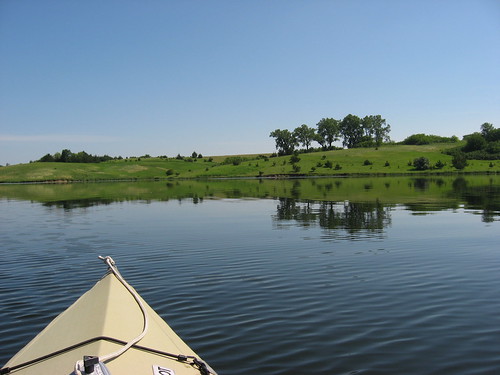

For me, the lake was crowded. By the time I launched, there were two fishing boats on the lake; and when I returned, there were several people on the swimming beach as well. It felt like a mob had descended upon the lake.
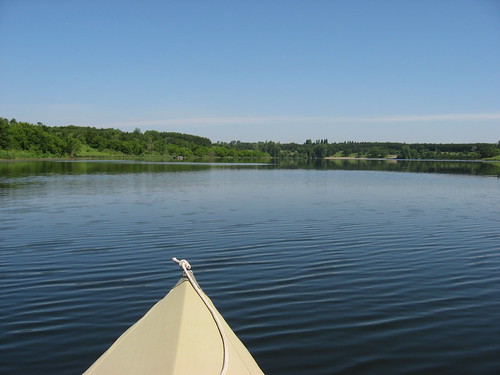
I have visited Lake Lakota both in the early spring and in the late fall. I think that those are the best times to paddle this body of water. While I like sneaking into bays that are largely inaccessible to most boaters, I don’t like paddling over the thick plant life and sitting in a bay covered with green algae. Also, there is little to see in such conditions. I will return to Lake Lakota after we have had the first hard frost and the water has cleared. Early spring and late fall seem to me the best time of year for Lake Lakota.

I was happy to see that my Folbot is still in good shape. I have had it for about 12 years and originally got it so that I could avoid the hassle of car-topping a canoe. Assembling the boat normally takes about 15 minutes, and then when I get home the hull has to dry thoroughly before folding it back into the bag. I like the rigid kayak better for cruising and for quick entry into the water. Still, there is time required to lash it to the rack on my car and move it about. Maybe the time for preparing and securing the boat for a cruise is about equal for the Folbot and my rigid kayak. Assembling the Folbot, however, generally has me in a sweat before even launching into the water.

Past narratives of my cruises on Lake Lakota can be accessed from the menu of area waterways along the right side of the blog.

No comments:
Post a Comment